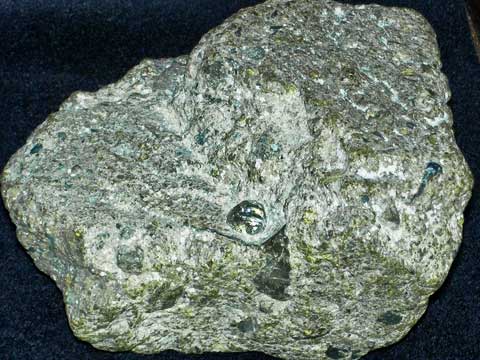Diamonds tell a story. Most people don’t realize that. The stone on their fingers may be billions of years old. Geology tells us more than we think.
When a diamond forms deep underground, small bits of other minerals can be trapped, or microscopically small drops of liquid. Geologists call this inclusion. They betray, for example, when a diamond is formed, at what depth. Or what the mantle of the earth ever looked like on the spot. For example, Timmerman (a Duch geology researcher) and her colleagues researched the inclusions in 24 Brazilian diamonds. They were able to deduce from this that very soon after the creation of the earth, a reservoir rich in helium-3 must have been created deep in the earth’s mantle from which volcanic islands such as Hawaii and Iceland were formed. The research was published over a week ago in Science, with Timmerman as the first author.
“In quartz and other rocks you will find liquid inclusions too. But chemical elements in them can exchange with those in the quartz itself, or with minerals outside it. With diamonds this is so slow, that it is not relevant. That makes them unique. They are real time capsules,” says Timmerman, the geology researcher.
“As you descend into the earth, temperature and pressure increase. You need a special combination of the two. It must be relatively cold for the depth. This is often the case in what we call the kratonic lithosphere. It consists of a very old piece of earth crust, a craton, that can be billions of years old. And underneath is a piece of light mantle from which some of the iron, uranium and thorium have been lost. Especially at a depth between 150 and 230 kilometres, the conditions can be favorable for the formation of diamonds. Carbon then precipitates and forms a specific crystal lattice.”
“Diamonds often come to the surface through so-called kimberlite pipes. These are rare, pipe-shaped structures that arise as a result of very deep volcanic eruptions. The magma is from a typical rock, kimberlite. It is very thin, because it is rich in water and CO2. As a result, it rises very quickly. It travels those 200 kilometres to the surface in a few hours to a few days. Just imagine. That’s almost as fast as a car! Diamonds do not have the time to adjust to the new pressure and temperature and remain diamonds. Such a pipe is quite explosive. Part of the magma is blown into the air in fragments and falls down again. Part of the magma stays at the top of the pipe.”
“During my master’s degree at the Vrije Universiteit I mainly determined the age of diamonds. This can be done, for example, by means of certain embedded minerals. These minerals contain radioactive elements, such as samarium. This decays to neodymium. The ratio of these elements to their decay products is a measure of age. The nice thing was that the VU lab had just received new equipment with which you could measure much smaller quantities of inclusions. Previously, you sometimes had to break open 600 diamonds, and then all the inclusions together were just enough. Then you got an average age of all those diamonds. But what does that say? With the new equipment we could for the first time determine the age of individual diamonds, and even of pieces of the same diamond. The most special one was a diamond of which the core was 2.3 billion years old, and the outside 200 million years old.“







